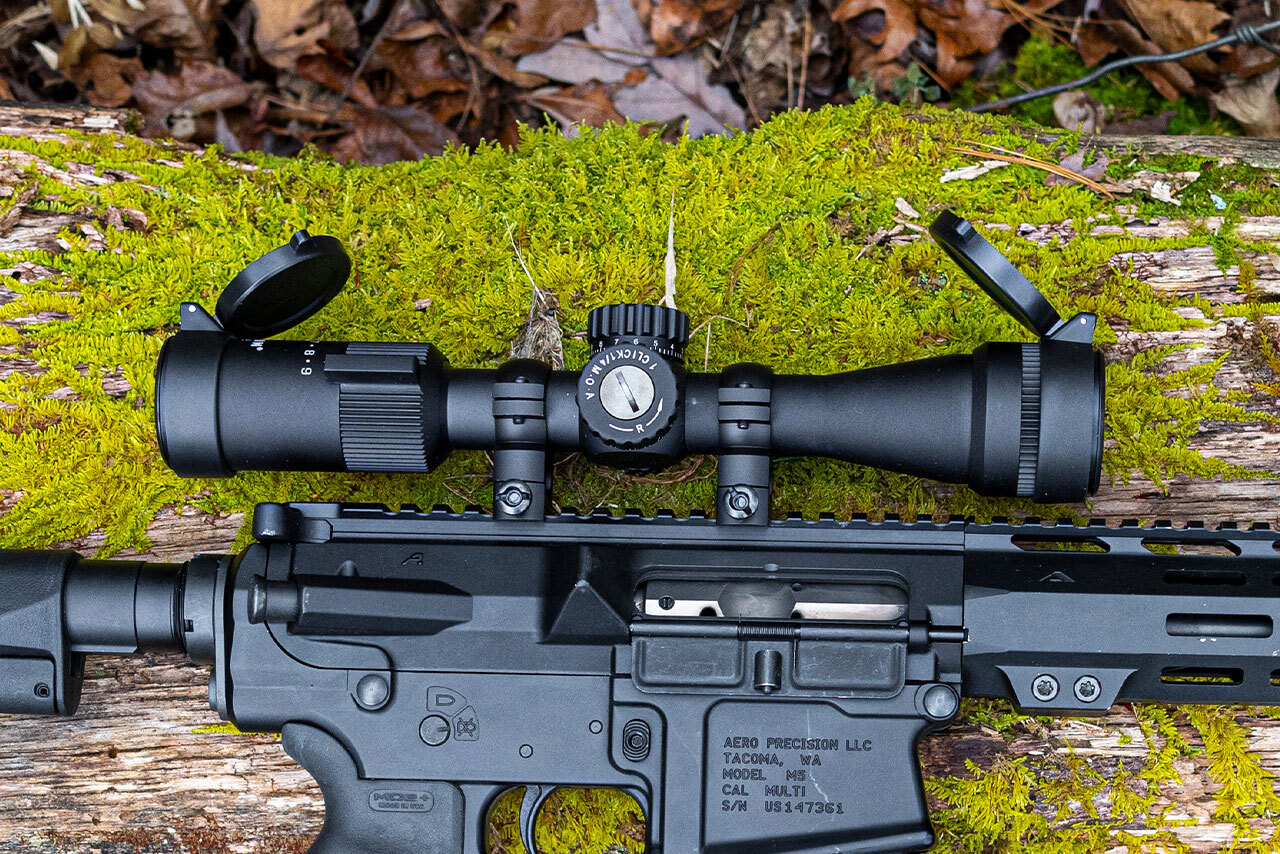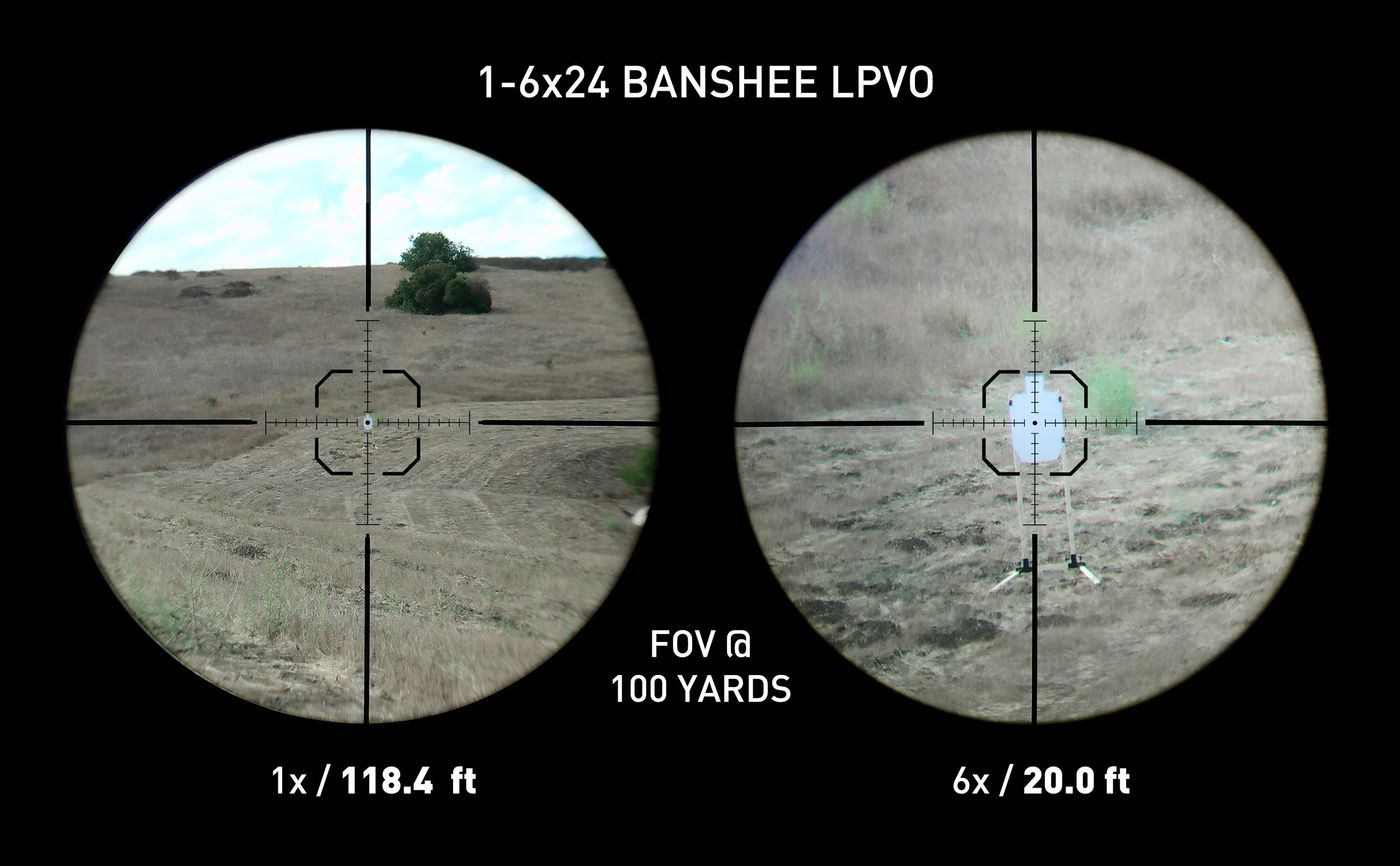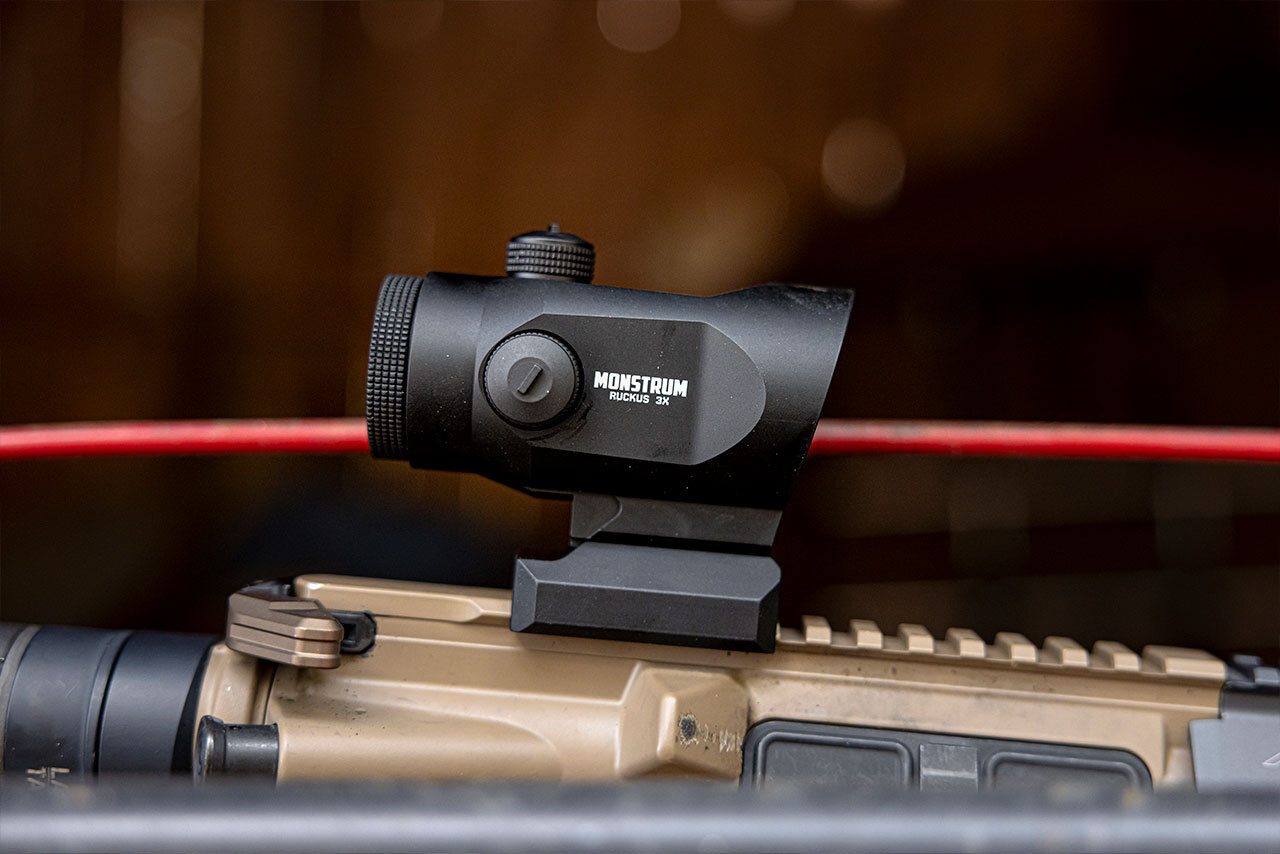
Is an LPVO right for you?
Posted by Monstrum on Nov 4th 2025
Wondering what kind of optic is best for your AR-15? Here’s everything you need to know about how LPVOs stack up against red dot and prism sights to find the perfect optic for you.
Why Buy an LPVO?
Deciding what type of optic to put on your rifle is a hard choice these days. If you want close range capability, there are red dot and holographic sights—1x optics with infinite eye relief making up-close shooting breeze. You could also put a prism sight on your rifle, a good balance of weight with some magnification, but these tend to have tight eye boxes and fixed magnification limiting their versatility. If you want an optic that can support both long and close range shooting, then you need the flexibility of variable magnification. That’s where LPVOs come in.
What is an LPVO?
LPVO stands for Low Power Variable Optic. The vast majority of rifle scopes these days offer variable magnification, but they are generally categorized by how high their highest or how low their lowest magnification settings can go. Variable magnification is achieved by adding a moving lens within the body of a scope which can be adjusted via a dial to to increase or decrease magnification.

For most intermediate caliber rifles like AR-15s, you have two options; low power variable optics (LPVOs) or medium power variable optics (MPVOs). There are also high power variable optics, but these are generally too large, heavy, and have too much magnification for rifles you wouldn’t be shooting off of a bipod or tripod most of the time.
The main difference between LPVOs and MPVOs is the ranges at which they are designed to work. LPVOs typically begin at 1x and go up to 6x, 8x, or 10x on the high end whereas MPVOs begin at 2x or 3x and go up to 18x or 20x. In short, LPVOs are best suited for close to medium ranges where MPVOs excel at the medium to long ranges. Typically, LPVOs tend to have straight tube bodies whereas MPVOs have larger objective lenses, this usually means that LPVOs are a bit lighter and smaller, but MPVOs have better light gathering.

Modern LPVOs typically have a true 1x setting which can be used with both eyes open shooting. They usually also have brightly illuminated reticles such that they can be used similarly to red dot sights at 1x, though they lack the unlimited eye relief that red dots have. Compared to other types of scopes, LPVOs typically have an oversized magnification adjustment making them easy to shift on the fly, but in all other aspects, they are rifle scopes like any others.
What are LPVOs good at?
LPVOs are good at providing a shooter with flexibility. Because they can be adjusted on the fly, they can easily be used at close range for snap shooting and they can be quickly zoomed in to take shots at medium ranges. They may not be as fast up close as red dots, but with practice, well made LPVOs can come very close to their speed. At medium ranges, LPVOs have the magnification for target identification and making hits, but they will struggle to perform at long ranges. If you want a single optic that can cover most of the distances a rifle would be called upon to shoot at, the LPVO is probably your best option.

Advantages of LPVOs vs. Red Dot Sights
The biggest advantage LPVOs have over red dot sights is magnification. While red dots have an advantage of speed over LPVOs at close range because they have unlimited eye relief, a red dot is difficult to make hits with at longer ranges. Having no magnification, red dot sights have no advantage whatsoever over the naked eye at target identification. If you want magnification, they must be paired with a magnifier to make accurate hits at longer ranges, but the red dot and magnifier combo has a couple drawbacks compared to LPVOs. For one, you now have two optics mounted to your rifle instead of one complicating your sighting system and doubling the chances of an optic failing. You are also tied to a fixed magnification with a magnifier (unless you have a variable magnification magnifier). Magnifiers also tend to shift out of alignment as they are flipped back and forth under normal use. They can still be used even with an off-center sight picture, but this isn’t an issue with LPVOs. Finally, red dot magnifiers occlude a significant portion of the shooter’s vision when flipped out of the way, limiting peripheral vision in a way that LPVOs do not.
In short, running a red dot with a magnifier is not an ideal setup for shooting at medium ranges because you’re taking an optic designed to work at very close ranges and adapting it into a role it wasn’t designed to fill on its own. You can get passable medium range performance out of a red dot sight and magnifier combo, but from a shooting and target identification perspective, most would be better served with an LPVO.
What are LPVOs not good for?
Because of the way LPVOs are shaped, they are not great at light gathering making them a suboptimal choice for shooting at dawn or dusk. For this reason, LPVOs are generally better suited to tactical applications than they are for hunting. They also tend to be more forgiving at lower magnifications than they are at higher magnifications which is to say that their eye boxes become tight with higher magnification, a trade off for having generous eye boxes at low magnifications.

While LPVOs are great for flexibility being able to cover very close to medium ranges, they are heavier than prism or red dot sights, so if weight savings is a concern, you may be better served by another type of optic. Lastly, LPVOs are not ideal for long range precision shooting. For one thing, they tend to have coarser adjustments. This is perfectly suitable for the shorter ranges they are designed to work within, but it’s wholly inadequate for making fine adjustments at distances beyond about 500 yards.
In short, LPVOs are great at close quarters to medium range shooting in daylight settings or where a weapon light can be used, but they struggle at longer ranges and in low-light settings.
Conclusion
LPVOs offer a compelling blend of both close and medium range capability that is ideally suited for intermediate caliber rifles like AR-15s. They have a greater degree of flexibility within their ranges than any other type of optic though they come with many of the same drawbacks that rifle scopes tend to have like eye box and eye relief constraints. While they excel at most tactical shooting applications, they struggle to perform at longer ranges or in roles where higher degrees of precision are called for.
If you want an optic that has variable magnification with the flexibility to be used at closer ranges, an LPVO is the optic for you. Explore our full line of LPVOs.

